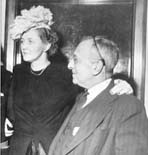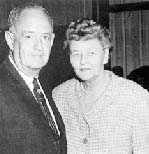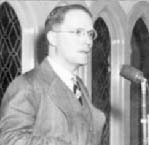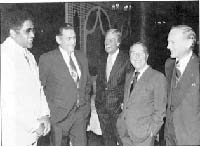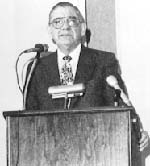
Harold E. Hughes and Mercedes McCambridge
Harold Hughes was an Iowa truck driver, former alcoholic and Kennedy Democrat. He became governor of Iowa from 1963 to 1969, the last Democrat to hold that office. As a Senator, he was known as "Mr. Addiction," and pushed through the 1970 Hughes Act creating the National Institute on Alcohol Abuse and Alcoholism (which, as NCA lore has it, Smithers sold to President Nixon). He also became a board member of the NCA in 1975. Initially, the NIAAA was highly dependent on the NCA for expertise and the NCA on the NIAAA for money — "As a result, the 1976 NCA's budget peaked at $3.4 million, nearly five times what it had been before the passage of the Hughes Act" (National Council on Alcoholism and Drug Dependence, 50th Anniversary).
Between establishing the NIAAA and joining the NCA board, Hughes quit the Senate to work for two religious foundations and established a religious retreat. Hughes described becoming involved with Harold Mulford, an Iowa sociologist and alcoholism activist (one of my heros) in the mid-1960s. But whereas Mulford describes this as the time when he helped to create a wonderful community-based alcoholism treatment system in Iowa, Hughes describes it as a time when he and Mulford began pushing the medical community into dealing with alcoholism.
Mulford, a very gentle man, seems not very fond of Hughes, or certainly of his role in the alcoholism field. For Hughes, the great expenditures and medical dominance of alcoholism that occurred in the 1970s was a Godsend. For Mulford, the cascading monies from the federal and state governments bypassed a self-help, inexpensive, community-based effort in favor of costly, ineffective medical treatments. Almost a decade after retiring from the Senate and his religious phase, Hughes returned to Iowa to create the Harold Hughes Center and became a private alcoholism treatment entrepreneur. According to Mulford, this made Hughes a good deal of money. Hughes died in 1996.
Mercedes McCambridge was an Oscar-wining actress who was an early female celebrity alcoholic for the NCA and who in 1969 became its first honorary chair.
|
